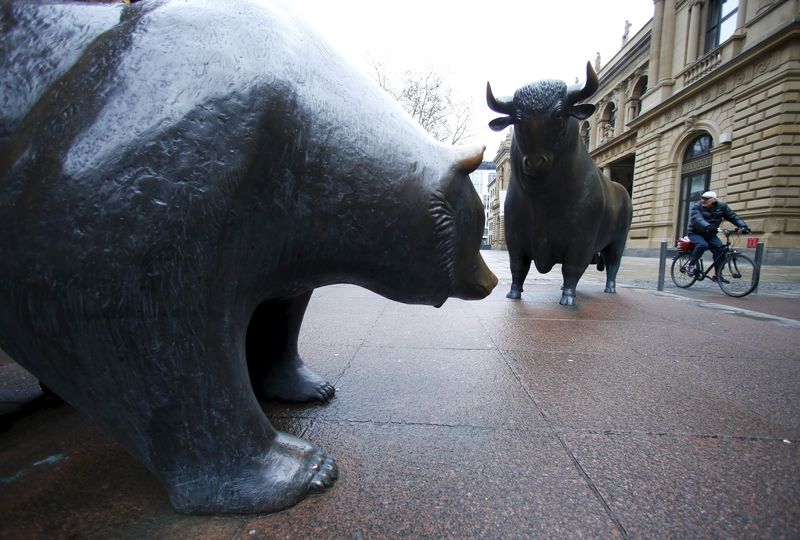By Geoffrey Smith
Investing.com -- Europe’s stock markets were mixed after early trading Wednesday, after U.S. Treasury Secretary Steven Mnuchin sobering comments late Tuesday that the trade deal due to be signed later in the day with China in no ways ends the simmering conflict between the two.
The outlook for Europe’s stocks depends to a high degree on relations between the world’s two biggest countries: with the ECB’s ultra-loose monetary policy the only meaningful prop to demand at home, the euro zone in particular needs strong demand from China and the U.S. to support it. But exports to the former have suffered as the Chinese economy stuttered under the impact of U.S. tariffs, while exports to the latter are still threatened by the prospect of U.S. action against European producers, by an administration still eager to reduce the U.S.’s trade deficit with the EU.
The euro zone’s trade surplus fell back to 20.7 billion euros in November from 28 billion in October, but still shows no sign of returning to the broad balance it enjoyed before the crisis. That has not gone unnoticed in Washington.
A further brake on European stocks right now is what seems like giddyingly high valuations. After years of underperformance, many local investors seem not to trust the record highs that were posted at the end of 2019, even though a number of influential U.S. banks have said they now see Europe as offering more value than an overstretched U.S. market.
The Stoxx 600 rose 29% last year, its best performance in 20 years (even if that was flattered by a savage drop at the end of 2018). According to Dirk Steffen, head of capital market strategy at Deutsche Bank (DE:DBKGn), that translated into a price-earnings multiple of 14.4, up from 11.4 over a year earlier. However, that’s still well below the 18.3x forward multiple recorded by the S&P 500 right now.
“Although similar increases in valuations have preceded falls in profits and share prices in certain cases, I see only limited risks for 2020,” Steffen said in a morning note. Not only are Chinese and U.S. growth fundamentally strong enough to support further profit growth, but the miserable yields on offer on European bonds also leave investors with few attractive options.
That’s particularly important right now because European government bond issuance is set to hit its lowest in a decade this year, as a flood of post-crisis bonds mature, leaving investors with a difficult choice on where to reinvest.
In that context, Steffen notes that “the expected excess return of equities over German federal debt is at an all-time high.”
By 5:10 AM ET in Europe, the STOXX 600 was essentially flat at 419.54, while the FTSE 100 rose 0.2% after weak inflation data cemented expectations of an interest rate cut from the Bank of England. The German DAX was down 0.1% while the Spanish and Italian markets underperformed on broad weakness in banking names.
